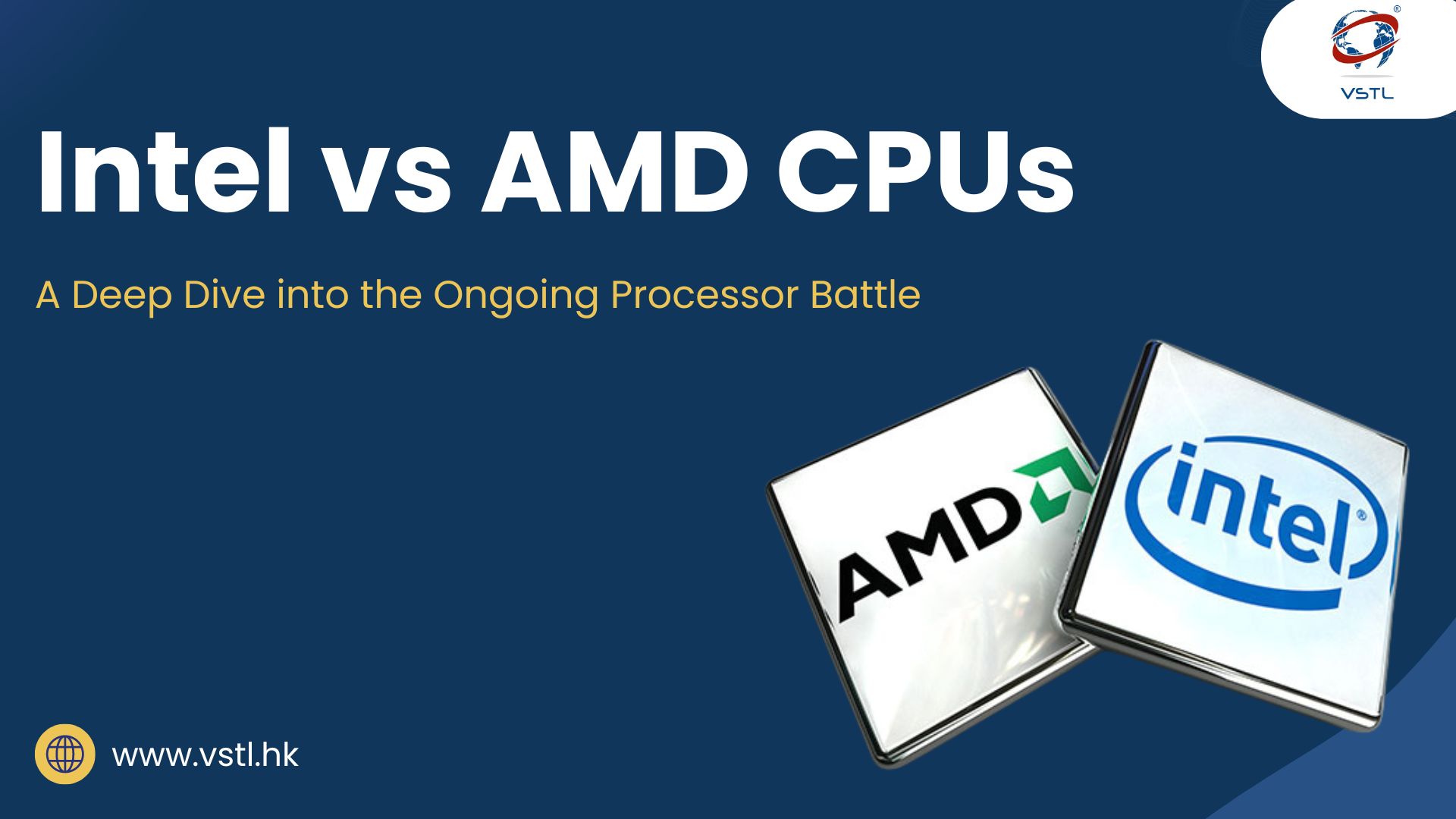
In the dynamic world of computer hardware, the ongoing battle between Intel and AMD for processor supremacy has been a driving force behind technological innovation. Both companies have been relentless in their pursuit of creating CPUs that offer the best performance, efficiency, and value for consumers. In this deep dive, we’ll explore the historical context, current market dynamics, and key differentiators that define the Intel vs AMD rivalry.
Historical Background:
The Intel vs AMD rivalry has deep roots that extend back to the 1980s when AMD entered the microprocessor market. Intel had already established itself as a dominant player with its x86 architecture, but AMD emerged as a worthy competitor, introducing compatibility with Intel’s architecture and offering more affordable alternatives.
Over the years, both companies have gone through various phases of innovation, with each trying to outdo the other in terms of speed, efficiency, and feature sets. This healthy competition has led to significant advancements in CPU technology, benefiting consumers with a wide range of options catering to different needs and budgets.
Current Market Dynamics:
As of the present day, Intel and AMD continue to engage in a fierce battle for market share across various segments, from consumer desktops and laptops to high-performance computing and servers. Each company has its lineup of processors designed to address specific use cases, and the competition has driven prices down while pushing performance boundaries.
Consumer Desktops and Laptops:
In the consumer space, both Intel and AMD offer a range of processors targeting different performance levels. Intel’s Core i3, i5, i7, and i9 series compete with AMD’s Ryzen 3, 5, 7, and 9 processors. The choice between the two often comes down to individual preferences, with considerations for gaming performance, content creation, and multitasking capabilities.
AMD has gained ground in recent years with its Ryzen series, providing strong competition to Intel’s Core processors. The Ryzen CPUs are known for offering more cores and threads at competitive price points, making them appealing to users seeking excellent multi-threaded performance for tasks like video editing and 3D rendering.
High-Performance Computing:
In the high-performance computing space, both companies have their flagship processors vying for the attention of enthusiasts and professionals. Intel’s Core X-Series and AMD’s Ryzen Threadripper cater to power users who demand top-tier performance for tasks such as 3D modeling, video production, and scientific simulations.
Server and Data Center:
The battle extends into the server and data center realm, where Intel’s Xeon processors and AMD’s EPYC processors compete for dominance. AMD, in particular, has made significant strides in recent years, challenging Intel’s historical dominance in the server market. EPYC processors are known for offering impressive core counts and competitive performance-per-dollar ratios.
Key Differentiators:
Several factors differentiate Intel and AMD processors, influencing the preferences of consumers and businesses alike.
- Architecture:
- Intel uses its proprietary x86 architecture, while AMD employs the AMD64 architecture, an extension of the x86-64 architecture.
- Each company has its unique approach to architectural design, affecting factors such as instruction execution and power efficiency.
- Manufacturing Process:
- Both Intel and AMD have transitioned to more advanced manufacturing processes to enhance performance and reduce power consumption.
- Intel has traditionally led in this aspect, but AMD has caught up with its move to 7nm and 5nm processes, narrowing the gap.
- Integrated Graphics:
- Intel processors, especially in the consumer space, often feature integrated graphics (Intel UHD Graphics or Intel Iris Xe Graphics).
- AMD’s Ryzen processors also offer models with integrated Radeon Graphics, providing decent performance for casual gaming and multimedia tasks.
- Price-Performance Ratio:
- AMD has gained a reputation for offering competitive price-performance ratios, providing consumers with more cores and threads at similar or lower price points than Intel counterparts.
- Intel, on the other hand, focuses on features like Quick Sync for video encoding and Thunderbolt support, which might be critical for specific use cases.
- Software Compatibility:
- Both Intel and AMD processors are compatible with the vast majority of software applications, thanks to the widespread use of the x86 architecture.
- Some users, however, may have specific software preferences or workloads that perform better on one architecture over the other.
Conclusion:
The Intel vs AMD processor battle is a fascinating saga that has shaped the landscape of modern computing. Each company brings its strengths and innovations to the table, providing consumers with a diverse array of choices. Whether you prioritize gaming performance, content creation capabilities, or server-grade computing power, both Intel and AMD have compelling options.
Ultimately, the ongoing competition between Intel and AMD benefits consumers, as it drives technological advancements and ensures that users have access to powerful, efficient, and competitively priced processors. The choice between Intel and AMD will depend on individual needs, preferences, and the specific use cases for which the processor will be employed. As the battle rages on, one thing remains certain: the future holds exciting developments as both companies continue to push the boundaries of CPU technology.

